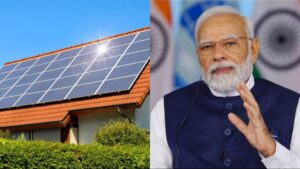India Overtakes China as the World’s Most Populous Country: Can India Become the Next Economic Superpower?

Introduction:
In a remarkable turn of events, India has surpassed China as the world’s most populous country, marking a significant shift in global demographics. With a population of over 1.4 billion, India’s growing geopolitical and economic influence has sparked discussions about its potential to become the next economic superpower. This blog article delves into the implications of India’s new status, examines the factors that differentiate India from China, and explores whether India can replicate China’s economic success.
India’s Desire to Emulate China’s Success:
India’s recent population milestone has raised questions about its potential to rival China’s economic dominance on the global stage. China’s exponential growth since 1990, fueled by leveraging its vast population as a low-cost labor force, transformed the country into the world’s factory and facilitated a significant reduction in poverty levels. Hundreds of millions of Chinese citizens transitioned from extreme poverty to a middle-income lifestyle, making China an indispensable player in the global economy. Against the backdrop of current geopolitical tensions and disruptions, there is considerable hope that India could replace China as a production hub, consumer market, and influential global force.
Key Differences between India and China:
Despite the ambition to emulate China’s economic success, India faces significant challenges that differentiate it from its neighbor. Three crucial factors hinder India’s ability to replicate China’s growth trajectory: the structure of India’s economy, the scarcity of manufacturing jobs, and the demographic profile of its population.
- Economic Structure:
India’s economy is fundamentally distinct from China’s, both in its current state and in comparison to historical examples of industrializing economies. India heavily relies on the services sector, while agriculture also constitutes a significant portion of its economy. In contrast, China’s economy had a higher proportion of manufacturing, which facilitated job creation, increased consumer spending, and robust export performance. India’s struggle to enhance its manufacturing sector has limited its ability to generate high-quality jobs and attain the desired growth rates. - Scarcity of Manufacturing Jobs:
The scarcity of manufacturing jobs is a pressing issue for India. Despite various government efforts, the manufacturing sector remains relatively small, accounting for around 14-15% of the economy. In contrast, China’s manufacturing sector is nearly twice as large. Manufacturing not only creates jobs but also fosters income growth, consumer spending, and favorable trade balances through exports. India’s failure to accelerate the growth of its manufacturing sector is particularly frustrating given its demographic advantage of a young workforce ready to enter the job market. - Demographic Profile:
India’s population profile further complicates its quest to replicate China’s success. While India’s population may be larger in absolute terms, the age distribution of its population reveals a potentially advantageous scenario. India has a substantial number of individuals in their 20s and 30s, with more young people set to join the workforce. In contrast, China, due to its one-child policy, is experiencing population decline and an aging population. India, therefore, possesses an ideal demographic structure for harnessing a surge in employment opportunities; however, the lack of sufficient jobs remains a major obstacle.
The Challenges Hindering India’s Manufacturing Growth and Female Workforce Participation
Introduction:
India’s aspiration to become a manufacturing powerhouse and boost female workforce participation is facing significant challenges. In the second part of this podcast, the discussion highlights the major differences between India and China in terms of manufacturing, as well as the low rate of women in the Indian workforce. These factors pose obstacles to India’s economic progress and need to be addressed for the country to reach its full potential.
- Manufacturing Challenges:
India’s path to becoming a manufacturing giant like China is hindered by several factors. Firstly, China’s dominance in the global manufacturing market makes it difficult for India to compete and attract investment. As labor costs in China rise, manufacturers seeking lower-cost alternatives often choose smaller countries like Vietnam and Bangladesh over India. Additionally, India’s large size and diverse interests make it challenging to focus solely on specific industries, unlike Bangladesh’s concentrated efforts in the garment assembly sector. The presence of local Indian companies, which can leverage their connections and influence, creates competition for foreign companies and poses additional challenges for India to attract investments and establish a strong manufacturing base.
However, there are signs of progress. Apple, for instance, has shifted a fraction of its production outside of China to India, and the country’s share in the global phone supply has increased significantly. Other industries, such as shoe manufacturing, are also bypassing Vietnam and moving to India. These developments indicate that India has the potential to capture a substantial share of the global manufacturing market, but it remains to be seen whether these are symbolic steps or part of a larger trend.
- Low Female Workforce Participation:
India faces a significant gender disparity in workforce participation, with only around 20% of working-age women employed. This rate is one of the lowest in the world, comparable to countries with struggling economies. In contrast, China and the United States have much higher rates, exceeding 60%. The low participation of women in India’s workforce poses a considerable challenge considering the country’s immense population and the potential economic contributions that women could make.
The reasons behind this disparity are complex. The scarcity of formal jobs and the lower status of women in society contribute to their exclusion from the workforce. Women predominantly work in farming, household activities, and informal labor that often goes unaccounted for in formal employment statistics. To increase female workforce participation, India needs to create more job opportunities at all levels of society and challenge societal norms that limit women’s access to formal employment.
Exploring the Factors That Differentiate India from China Economically and Politically
Introduction:
In a thought-provoking podcast discussion, New York Time’s Sabrina Tavernise and Alex Travelli delve into the reasons why India might not follow the same economic trajectory as China. They analyze three key differences between the two nations that contribute to India’s unique path: cultural factors, the role of women, and the political transformation underway in India. This blog article aims to summarize the podcast’s key points, shedding light on the distinct aspects that set India apart from China.
- Cultural Factors and the Role of Women:
One significant factor discussed is the cultural perspective on women working in India. Surprisingly, as India has grown wealthier, the rate of women participating in the workforce has decreased. Travelli suggests that cultural pressures and perceptions of prestige play a role in this phenomenon. For some families, it is seen as prestigious to have women work at home, while working outside the home is considered less prestigious. As families become financially stable, they may pressure women to focus on domestic responsibilities instead of seeking employment outside the household. Although the role of women in Indian society has improved in various aspects, such as education, their participation in the workforce remains limited. - Political Transformation in India:
The political differences between India and China are another critical factor that sets the two countries apart. India is the world’s largest democracy, while China is an authoritarian communist state. The decision-making processes, information gathering, and execution of policies differ significantly between the two nations. Travelli explains that China’s government can make swift, decisive, and sometimes brutal decisions, enabling rapid implementation of reforms or infrastructure projects. In contrast, India’s political landscape involves complex negotiations, extensive bureaucracy, and slower decision-making processes. This divergence affects India’s ability to replicate China’s economic success, particularly in terms of large-scale reforms and infrastructure development. - Modi’s Ambitious Agenda and Hindu Nationalism:
The third differentiating factor is the ambitious agenda of Prime Minister Modi and his party, which seeks to reshape India’s politics and consolidate power. Modi’s government aims to transform India in various ways and has been inspired by China’s accomplishments over the past three decades. Travelli highlights the government’s efforts to centralize power, exert control over state governments, influence the judiciary, and reshape institutions. However, Modi’s push for Hindu nationalism and the potential relegation of Muslims to a second-class status introduces uncertainties due to India’s diverse ethnic composition. While the economic impact of these political ideologies remains unclear, the magnitude of the minority population affected in India is much larger than China’s situation with its Muslim minorities.
Conclusion:
While India’s overtaking of China as the world’s most populous country has garnered attention, its path to becoming an economic superpower faces significant challenges. Structural differences between the Indian and Chinese economies, the scarcity of manufacturing jobs, and the need to capitalize on a favorable demographic profile all pose obstacles to replicating China’s rapid growth. However, India’s immense potential, its growing global influence, and the aspirations of various countries and companies to diversify from China provide reasons for optimism. As India navigates its future, it will require strategic reforms, targeted investments, and a concerted focus on job creation and manufacturing growth to unlock its full economic potential.
India’s path to becoming a manufacturing hub and improving female workforce participation is marked by significant challenges. China’s strong position in the manufacturing market, the complexity of India’s economy with competing interests, and the low rate of women in the workforce hinder the country’s progress. However, there are positive signs, such as Apple’s production shift and the relocation of industries to India. To overcome these challenges, India must focus on attracting investment, streamlining regulations, and creating more job opportunities. Additionally, efforts should be made to empower women, challenge societal norms, and promote gender equality in the workforce. By addressing these issues, India can unlock its potential for economic growth and development.
While both India and China are significant global players, the podcast discussion suggests that India will not simply replicate China’s economic trajectory. The world has changed significantly since China’s economic rise, and the unique characteristics of India, including cultural factors, political dynamics, and the government’s focus on Hindu nationalism, will shape its own path. The impact of these factors on India’s economy remains uncertain, and it is crucial to recognize that India’s growth will be distinct from China’s. Nonetheless, India’s economic progress will undoubtedly have a significant impact on the world stage.



